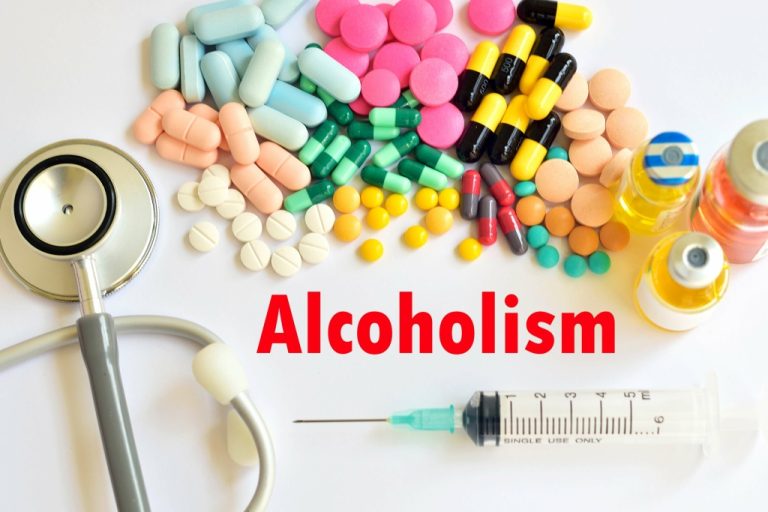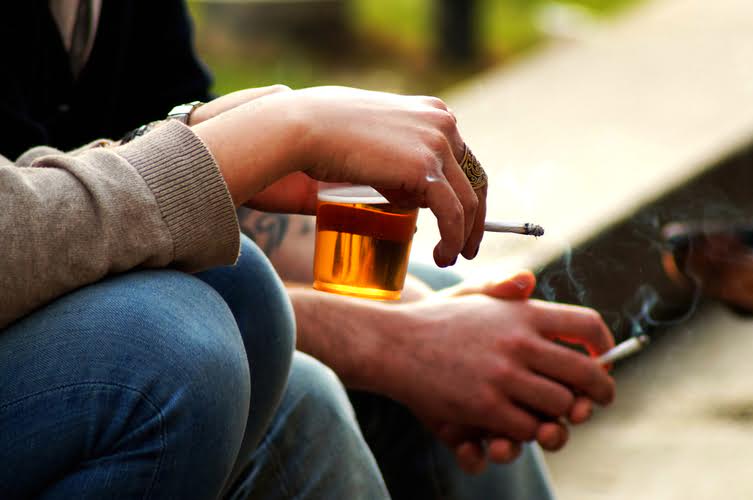The Biopsychosocial Model 25 Years Later: Principles, Practice, and Scientific Inquiry PMC
This may involve reckless behaviour that is often incomprehensible to other people and may lead to stigma and shame [16, 18, 48]. Mental health problems, such as anxiety and depression, may increase [29], and it may be difficult to maintain social relationships, everyday parenting responsibilities and work routines [18, 34]. The hard work of obtaining, paying for, and using substances becomes all-consuming [37, 47]. Most people who develop SUD either manage their substance-induced life problems adequately or are able to quit on their own or with help from family and friends [42]. For a smaller group of people, substances have too many negative consequences, and they need help and treatment from professionals.
Disease Model
According to the Disease Model, addiction is influenced by a combination of genetic, environmental, and developmental factors that predispose certain individuals to substance use disorders. The biopsychosocial model outlined in Engel’s classic Science paper four decades ago emerged from dissatisfaction with the biomedical model of illness, which remains the dominant healthcare model. Engel’s call to arms for a biopsychosocial http://www.hallart.ru/other/from-russia-with-love model has been taken up in several healthcare fields, but it has not been accepted in the more economically dominant and politically powerful acute medical and surgical domains. It is widely used in research into complex healthcare interventions, it is the basis of the World Health Organisation’s International Classification of Functioning (WHO ICF), it is used clinically, and it is used to structure clinical guidelines.
- Engel wants to argue that schizophrenia is a medical disease—that is, a problem falling under medicine’s purview—and that, if we carefully consider this disease’s properties (along with those of several other ailments) we will see that medicine ought to embrace his BPSM.
- Mental health is health, and one’s psychological well-being impacts both mental and physical health.
- Its participants have argued that various poorly-understood states of suffering and undesirable behaviors are “diseases.” These “diseases” are often asserted to be caused by various factors that have no proven etiological significance.
- It also takes into consideration the socio-structural perspective of the individual as it relates strongly to the many decisions that are made around addictions.
Drug craving and addiction: integrating psychological and neuropsychopharmacological approaches
According to Slade et al., the NIH “funding opportunity was effectively a rallying call to apply the full expanse of the biopsychosocial model (Engel 1977) to an epidemiologic study of painful TMD” (Slade et al. 2016, 1085). As described by the authors, this meant researchers started from the “premise” that “TMD is a complex disorder resulting from an interplay of causes from multiple genetic and environmental domains” (Slade et al. 2016, 1091). According to the model, illness is a product of dynamic interactions among the sorts of factors listed in Fig. BPSM researchers have also explored how social status and stressors can affect health outcomes (Bolton and Gillett 2019; Engel 1977). It is important to acknowledge that no single model can fully explain or address all aspects of addiction, as each individual’s experience of addiction is unique and shaped by various biological, psychological, social, and spiritual factors.
Communicating Clinical Evidence
- For example, as discussed in this article’s online Appendix, Maltzman argues that, due in part to “developments in biopsychosocial medicine,” a disease can be defined as a syndrome or cluster of biological and psychosocial problems; on this basis, “alcoholism is a disease” (Maltzman 1994, 13–15).
- The Psychological Model has been supported by a wealth of research that highlights the strong relationship between addiction and mental health issues.
- What does it mean to have an arguably non-existent model guiding whole areas of medical research and practice?
While research of this kind raises important issues about identity, and notions of health and illness, the outcomes have implications for drug policy, health care systems and delivery, and treatment for substance use problems. Both social norms and laws influence attitudes, perceptions, and beliefs of the effects https://itwebdesign.net/HowToPromoteWebsite/optimization-is of substances and considerably affect consumption rates (Babor, Caetano, Casswell et al. 2003; Hawkins, Catalano, and Miller 1992). Proponents of a ‘war on drugs’, for example, believe that laws and policies that are lenient towards substance use are linked with greater prevalence of use and criminal activity.
- (This is not to say the BPSM has no value. As I argue, it is still a useful tool for organizing and communicating information about the psychosocial determinants of health).
- The NAOMI trial raised significant scientific, legal, ethical and political concerns, which included issues of patient safety, the controversial use of placebo control therapy, lack of equipoise, treatment discontinuation, and compassionate access to treatment (Oviedo-Joekes, Nosyk, Marsh, et al. 2009).
- As Searle (2004) argues, “there is a striking difference between the passive character of perceptual consciousness and the active character of what we might call ‘volitional consciousness’“ (41).
- This also takes into consideration the social determinants of health, social factors, culture, age, gender and other stressful situations that were experienced.
The Biopsychosocial Model 25 Years Later: Principles, Practice, and Scientific Inquiry
Rather, in embracing Systems Theory,2 Engel recognized that mental and social phenomena depended upon but could not necessarily be reduced to (ie, explained in terms of) more basic physical phenomena given our current state of knowledge. He endorsed what would now be considered a complexity view,9 in which different levels of the biopsychosocial hierarchy could interact, but the rules of interaction might not be directly derived from the rules of the higher and lower rungs of the biopsychosocial ladder. The social dimension is considered to be vitally important, it is the immediate interpersonal domain that is most proximal to the person who develops an addictive disorder.
Temporomandibular disorder(s)

Although a full discussion is warranted pertaining to these challenges, these ethical concerns raised by Oviedo-Joekes et al. (2009) resonate with our present discussion. Notions of a pathologized self, deeply enmeshed with personal identity, may lead an individual to internally negotiate a relationship between the self and the brain (Dumit 2003). It may further challenge understandings of “accepted” identities, such as health seeking and rational, as opposed to “contested” identities, such as addict, intoxicated, and at-risk (Fry 2008).
- This claim coincides with a recent emergence of a global advocacy movement that seeks to construct the use of drugs as a human right (Elliott, Csete, Wood, and Kerr 2005; Lines and Elliott 2007).
- Some aspects are universal (e.g., the activation of the reward system by drugs of abuse).
- You may use a combination of theories to help your clients explore why they use substances and why they continue to use substances, are increasing substance use, or choosing to change their substance use, remembering you are not diagnosing.
- Few morbid conditions could be interpreted as being of the nature “one microbe, one illness”; rather, there are usually multiple interacting causes and contributing factors.
- These points suggests that “gun violence disease” is not necessarily a fringe argument, and that its potential to shape medical and political practices should be taken seriously.
- For example, solely focusing on an individual’s moral character or willpower may overlook the need for medical interventions, psychological therapy, and social support, which are crucial components of successful addiction treatment.

Additionally, certain environments have specific social norms related to drug use (e.g., “Everyone experiments a little with drugs in college”). Some aspects are universal (e.g., the activation of the reward system by drugs of abuse). Yet many other elements are idiosyncratic, https://buryatia-online.ru/dlit/page/2 such as the intensity of the experience of reward and the functioning of the individual’s mesolimbic dopaminergic pathway in the brain. The biopsychosocial model provides a means of considering the myriad of factors that can contribute to the risk of addiction.
Further, the clinically observed defining feature of addiction a loss of control is understood as a socially normative notion. Thus the claim that “an addict cannot be a fully free autonomous agent” (Caplan 2008, p.1919) is debatable. Because of a tendency to focus on extreme pathological states, the wide range of normal is often forgotten. Recent advances in neuroscience provide compelling evidence to support a medical perspective of problematic substance use and addiction (Dackis and O’Brien 2005). Despite these developments, the science is still in its early stages, and theories about how addiction emerges are neither universally accepted nor completely understood.
In addition, factors such as adverse childhood experiences, mental health issues, and social environment have been identified as significant contributors to addiction. A future application of clinical neuroscience may allow for more precise prediction of a neurogenetic vulnerability to addiction, lead to better understanding of pharmacokinetics and pharmacodynamics of drug use, and to bring greater precision to diagnosis than is currently possible. Realizing a neurobiological or genetic susceptibility to addiction could empower life planning and the avoidance of high-risk scenarios. Individuals involved in treatment could learn effective coping strategies, modify proximal environmental triggers, and achieve other social goals.
 Categories:
Categories:  Tags: |
Tags: | 